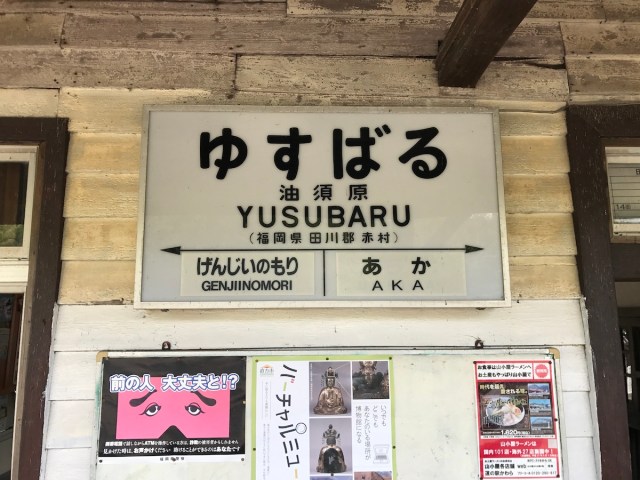
Take a trip back to 1895 with this quaint slice of Japanese history!
Think about trains in Japan and the first thing that might spring to mind is that they are crowded as heck. After all, Japan is home to not only Shinjuku Station, the busiest station in the world, but out of the 100 busiest train stations in the world, 82 of them are Japanese.
However, these crowded train stations are all located in Japanese cities like Tokyo and Osaka. Venture out of the big cities, as our Japanese language reporter Masanuki Sunakoma did, and you’ll be met with an entirely different experience. The Japanese countryside is home to train stations with a more old-school, rustic vibe, like Kyushu’s Yusubaru Station, located in Fukuoka Prefecture.
Not only is Yusubaru Station quaint and charming, it happens to be the oldest wooden station building in Kyushu, having first opened way back in August 1895.
▼ Yusubaru Station
Just from this picture alone, the first thing you may notice is the complete lack of any vending machines. Most places in Japan, regardless of how remote they may seem, will have the familiar glow of a vending machine, yet Yusubaru was completely vending machine-free.
Above the entrance to the station is a small, wooden sign with the station name in full — ‘Heisei Chikuho Railway Yusubaru Station’. Above the bench on the left was another wooden sign, with a sign pointing to a baggage room to the right, and to the bicycle parking area on the left. But… hang on a minute…
The sign used the old fashioned kanji character for jitensha (bicycle) — 自轉車, as opposed to the modern way of writing it, 自転車. A small difference, but further evidence of how old this station is.
The waiting area in the station also featured old-fashioned kanji characters for ‘message board’ (in current Japanese dengonban) — 板言傳 was used instead of 伝言板, which is currently used. The old-fashioned kanji is intended to be read from right to left.
Way back in 1895, this board was used by locals to exchange messages, but Masanuki struggled to think of a time he’d seen one of these being used these days. In fact, the Yusubaru Station message board now features posters and information about the station’s history.
As Masanuki looked around the station, he came across what appeared to be the train timetable. As someone who lives and works in Tokyo, Masanuki is used to confusing train stations, but this… he had no idea what any of it meant. The station names and information listed didn’t make any sense!
Upon further inspection, the timetable seemed to be for another station entirely. The real timetable was on a red-and-blue poster to the left of the entrance. Was the fake sign just put there to add to the retro atmosphere of the station?
Maybe, but the more likely reason is that the station was actually used as a shooting location for the drama Tokyo Tower: Mom and Me, and Sometimes Dad. Perhaps the fake timetable was a leftover prop!
Yusubaru Station was primarily used in the past to help transport coal. As the stations after Yusubaru were all downhill, the bank train was detached here before the rest of the train continued its journey. “That must be why the train station feels so spacious,” thought Masanuki.
At last, the train arrived and Masanuki took his seat next to the window and prepared for the beautiful scenic views only a countryside railway can offer. And he certainly wasn’t disappointed — look at this gorgeous view!
▼ You won’t see anything like this up in Tokyo, that’s for sure!
Despite being over 100 years old, Yusubaru Station is incredibly well preserved. The station is completely unstaffed — not uncommon for train stations in the countryside — so it’s thanks to local residents and railway volunteers who come to clean it that it’s in the condition it is today. If you’re ever in the Fukuoka area and want to enjoy a nice little piece of Japanese history, be sure to check it out!
Station information
Yusubaru Station / 油須原駅
Address: Aka, Tagawa District, Fukuoka 824-0431
福岡県田川郡赤村赤
Photos ©SoraNews24
● Want to hear about SoraNews24’s latest articles as soon as they’re published? Follow us on Facebook and Twitter!
[ Read in Japanese ]

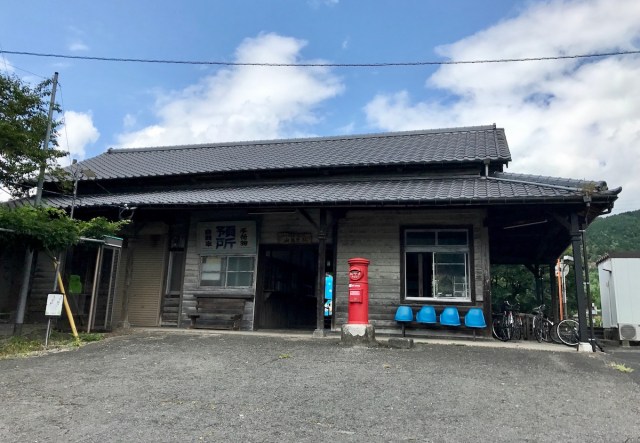
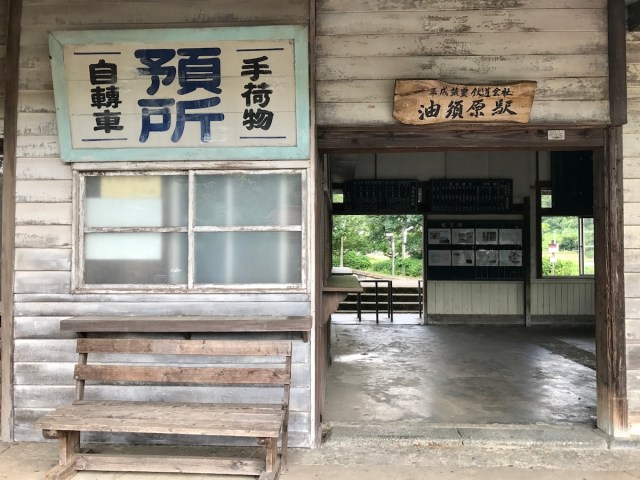
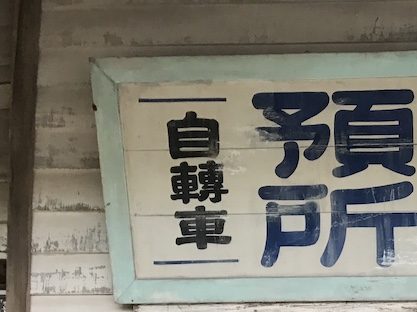
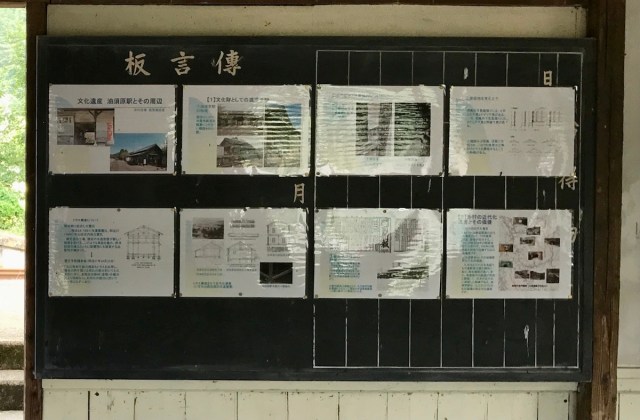

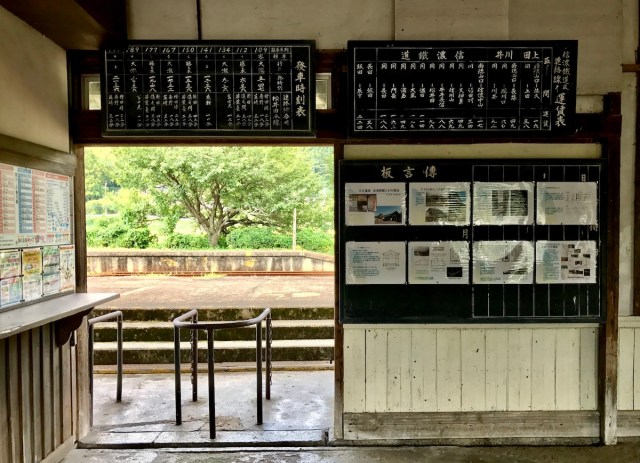
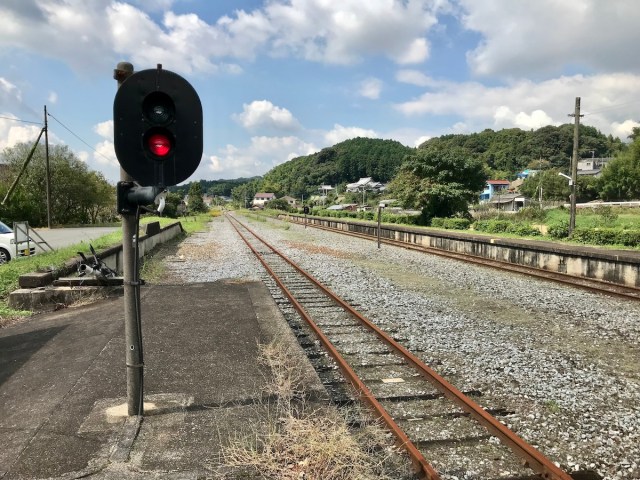
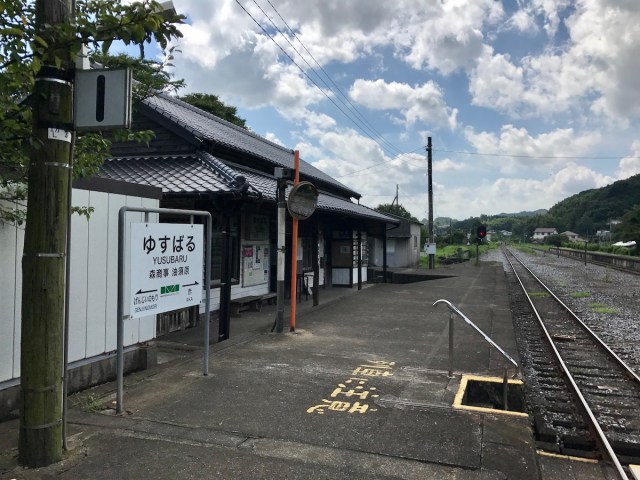
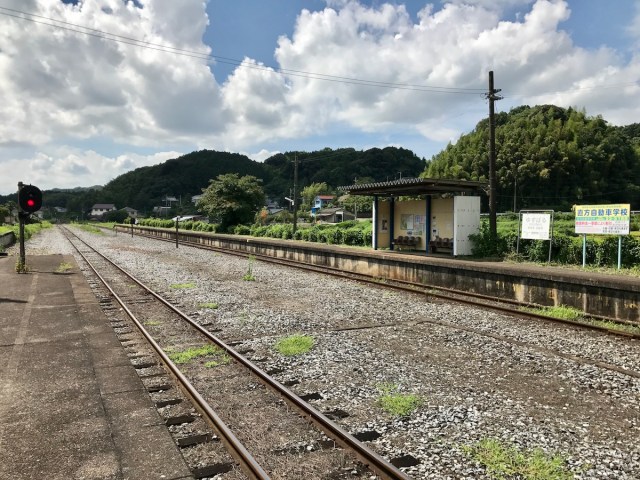
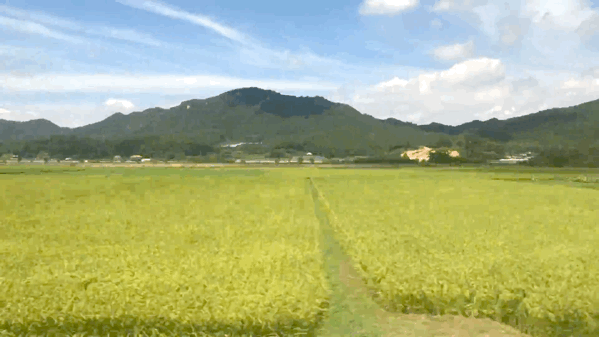
 Searching for Totoro at Totoro Station in Totoro, Japan
Searching for Totoro at Totoro Station in Totoro, Japan Vending machine makes commuters smile at Japanese train station
Vending machine makes commuters smile at Japanese train station Can you spot the hidden cats at this Tokyo train station?
Can you spot the hidden cats at this Tokyo train station? We ride one of Japan’s most accidentally terrifying trains
We ride one of Japan’s most accidentally terrifying trains We channel Sen from Ghibli’s Spirited Away and travel to a Japanese train station by the sea
We channel Sen from Ghibli’s Spirited Away and travel to a Japanese train station by the sea Foreigner’s request for help in Tokyo makes us sad for the state of society
Foreigner’s request for help in Tokyo makes us sad for the state of society Seaside scenery, history, and so many desserts on Yokohama’s Akai Kutsu【Japan Loop Buses】
Seaside scenery, history, and so many desserts on Yokohama’s Akai Kutsu【Japan Loop Buses】 Mikado Coffee is a 76-year-old coffee chain with a major celebrity connection
Mikado Coffee is a 76-year-old coffee chain with a major celebrity connection Japanese city loses residents’ personal data, which was on paper being transported on a windy day
Japanese city loses residents’ personal data, which was on paper being transported on a windy day Do Hi-Chew-flavor Hi-Chews have a reason to exist?【Taste test】
Do Hi-Chew-flavor Hi-Chews have a reason to exist?【Taste test】 Should you add tartar sauce to Japanese curry rice? CoCo Ichi makes diners an unusual offer
Should you add tartar sauce to Japanese curry rice? CoCo Ichi makes diners an unusual offer New Pokémon cakes let you eat your way through Pikachu and all the Eevee evolutions
New Pokémon cakes let you eat your way through Pikachu and all the Eevee evolutions A visit to the best UFO catcher arcade in the universe!
A visit to the best UFO catcher arcade in the universe! Japan’s massive matcha parfait weighs 6 kilos, contains hidden surprises for anyone who eats it
Japan’s massive matcha parfait weighs 6 kilos, contains hidden surprises for anyone who eats it Doraemon found buried at sea as scene from 1993 anime becomes real life【Photos】
Doraemon found buried at sea as scene from 1993 anime becomes real life【Photos】 McDonald’s new Happy Meals offer up cute and practical Sanrio lifestyle goods
McDonald’s new Happy Meals offer up cute and practical Sanrio lifestyle goods Japanese ramen restaurants under pressure from new yen banknotes
Japanese ramen restaurants under pressure from new yen banknotes French Fries Bread in Tokyo’s Shibuya becomes a hit on social media
French Fries Bread in Tokyo’s Shibuya becomes a hit on social media Red light district sushi restaurant in Tokyo shows us just how wrong we were about it
Red light district sushi restaurant in Tokyo shows us just how wrong we were about it New private rooms on Tokaido Shinkansen change the way we travel from Tokyo to Kyoto
New private rooms on Tokaido Shinkansen change the way we travel from Tokyo to Kyoto Tokyo Tsukiji fish market site to be redeveloped with 50,000-seat stadium, hotel, shopping center
Tokyo Tsukiji fish market site to be redeveloped with 50,000-seat stadium, hotel, shopping center Beautiful Ghibli sealing wax kits let you create accessories and elegant letter decorations【Pics】
Beautiful Ghibli sealing wax kits let you create accessories and elegant letter decorations【Pics】 Secret Kitchen bento serves Japanese flowers, birds, wind and moon in a box, but is it worth it?
Secret Kitchen bento serves Japanese flowers, birds, wind and moon in a box, but is it worth it? New definition of “Japanese whiskey” goes into effect to prevent fakes from fooling overseas buyers
New definition of “Japanese whiskey” goes into effect to prevent fakes from fooling overseas buyers Our Japanese reporter visits Costco in the U.S., finds super American and very Japanese things
Our Japanese reporter visits Costco in the U.S., finds super American and very Japanese things Studio Ghibli releases Kiki’s Delivery Service chocolate cake pouches in Japan
Studio Ghibli releases Kiki’s Delivery Service chocolate cake pouches in Japan All-you-can-drink Starbucks and amazing views part of Tokyo’s new 170 meter-high sky lounge
All-you-can-drink Starbucks and amazing views part of Tokyo’s new 170 meter-high sky lounge More foreign tourists than ever before in history visited Japan last month
More foreign tourists than ever before in history visited Japan last month Disney princesses get official manga makeovers for Manga Princess Cafe opening in Tokyo
Disney princesses get official manga makeovers for Manga Princess Cafe opening in Tokyo Sales of Japan’s most convenient train ticket/shopping payment cards suspended indefinitely
Sales of Japan’s most convenient train ticket/shopping payment cards suspended indefinitely Sold-out Studio Ghibli desktop humidifiers are back so Totoro can help you through the dry season
Sold-out Studio Ghibli desktop humidifiers are back so Totoro can help you through the dry season Japanese government to make first change to romanization spelling rules since the 1950s
Japanese government to make first change to romanization spelling rules since the 1950s Ghibli founders Toshio Suzuki and Hayao Miyazaki contribute to Japanese whisky Totoro label design
Ghibli founders Toshio Suzuki and Hayao Miyazaki contribute to Japanese whisky Totoro label design Tokyo’s most famous Starbucks is closed
Tokyo’s most famous Starbucks is closed One Piece characters’ nationalities revealed, but fans have mixed opinions
One Piece characters’ nationalities revealed, but fans have mixed opinions We asked a Uniqlo employee what four things we should buy and their suggestions didn’t disappoint
We asked a Uniqlo employee what four things we should buy and their suggestions didn’t disappoint Japan’s Harajuku Station to be rebuilt ahead of 2020 Tokyo Olympics
Japan’s Harajuku Station to be rebuilt ahead of 2020 Tokyo Olympics This unstaffed Japanese train station is like a Ghibli anime come to life
This unstaffed Japanese train station is like a Ghibli anime come to life We visit the 24-hour male-only sauna just outside of Hakata Station and ponder a strange sight
We visit the 24-hour male-only sauna just outside of Hakata Station and ponder a strange sight Stay at a Japanese capsule hotel in Tokyo for less than US$20 a night
Stay at a Japanese capsule hotel in Tokyo for less than US$20 a night The Japanese train station where staff bow to departing passengers
The Japanese train station where staff bow to departing passengers Japan’s West Kyushu Shinkansen bullet train service to Nagasaki is set to open this fall
Japan’s West Kyushu Shinkansen bullet train service to Nagasaki is set to open this fall We receive first-class treatment for economy-class prices at First Cabin Hakata hotel
We receive first-class treatment for economy-class prices at First Cabin Hakata hotel Our reporter visited a dangerous torii at a Shinto shrine and almost had a heart attack
Our reporter visited a dangerous torii at a Shinto shrine and almost had a heart attack Spooky dystopian “State of Emergency” ads make Hakata Station feel like the world of Evangelion
Spooky dystopian “State of Emergency” ads make Hakata Station feel like the world of Evangelion The most beautiful train station in Japan? Award-winning design by Kengo Kuma wows travellers
The most beautiful train station in Japan? Award-winning design by Kengo Kuma wows travellers Sleep next to the railroad tracks at the closest hotel to a train station platform in Japan
Sleep next to the railroad tracks at the closest hotel to a train station platform in Japan Strange bird outside Shinjuku Station looks like a reincarnated salaryman
Strange bird outside Shinjuku Station looks like a reincarnated salaryman Harajuku Station will be demolished after the Tokyo Olympics and Paralympics
Harajuku Station will be demolished after the Tokyo Olympics and Paralympics Making trains meow-r fun: Japanese station master cats (and bunny!) strut their fluff【Pics】
Making trains meow-r fun: Japanese station master cats (and bunny!) strut their fluff【Pics】 Shinjuku Station’s new mascot character gets lost at the station, in more ways than one
Shinjuku Station’s new mascot character gets lost at the station, in more ways than one 12 beautiful Japanese train stations by the sea
12 beautiful Japanese train stations by the sea
Leave a Reply